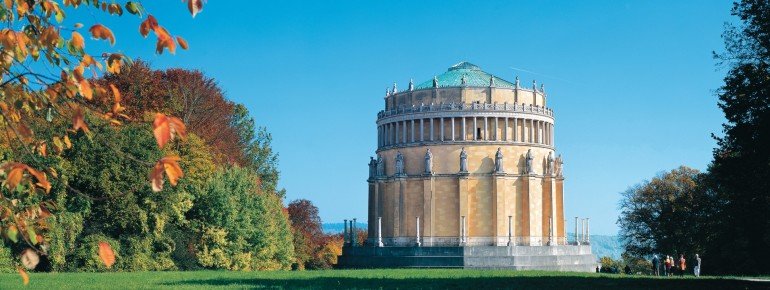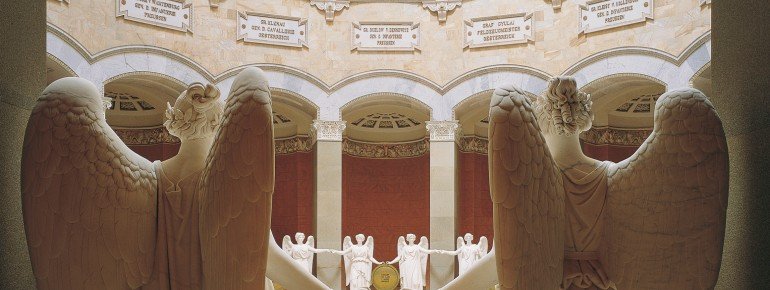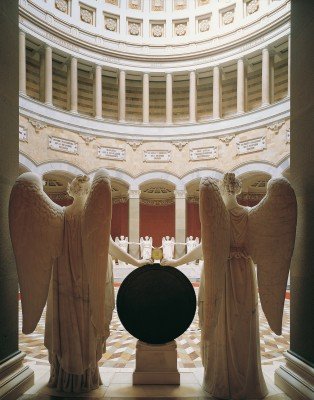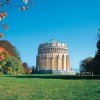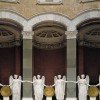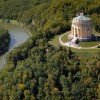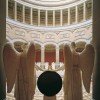Contents
Description
The Hall of Liberation is a historic building above the city of Kelheim by the river Danube. It was built by King Ludwig I. as a memorial to the victorious battles agains Napoleon.
Architecture
The exterior façade is surrounded by buttresses, which carry 18 colossal statues, each depicting one of the many German tribes. The number 18 stands for the date of the Battle of Leipzig, which saw the troops of Napoleon heavily defeated.
The interior shows 34 goddesses of victory statues built out of Carrara marble, designed by Ludwig Schwanthaler. The statues are supported by 17 gold-plated shields, which were made from the bronze that came from melted weapons.
The marble flooring is ornamented with a motto by Bavarian King Ludwig I, reminiscent of the construction of the Hall of Liberation: “May the Germans never forget what made the struggle for independence necessary and how it turned out to be victorious.”
Visiting the Sight
Visiting the sight is not only rewarding for its historical importance. From top of the Hall of Liberation, you enjoy a wonderful view over Kelheim and the Danube.
Additionally, you may combine paying a visit to the sight with a visit to the Danube gorge (“Donaudurchbruch”) as well as Weltenburg Abbey. You may, for instance, go on a boat trip through the Danube gorge to Weltenburg Abbey in the morning, enjoy a break in the beer garden and visit the monastery at midday, then return to Kelheim by ship and do the detour to the Hall of Liberation in the afternoon. There is a café at the Hall of Liberation with a beautiful outdoor terrace, where you can spend some time drinking coffee and eating a piece of cake. Visiting the Hall of Liberation during midday, you should try the menu and have lunch here.
During hot days it is not recommendable to walk all the way up to the Hall of Liberation, as the path is fully exposed to the sun.
Historical Information
The Hall of Liberation was built in the name of Bavarian King Ludwig I and was meant to be a memorial site for the victorious battles against Napoleon that took place during the war of liberation in the period between 1813 and 1815.
With the idea of realising ancient and Christian architectural projects, the construction process was initialised by Friedrich Gärtner. In 1863 the building was finished by Leo von Klenze, who is also the architect of Valhalla in Regensburg, Bavaria, Germany.
How to get there
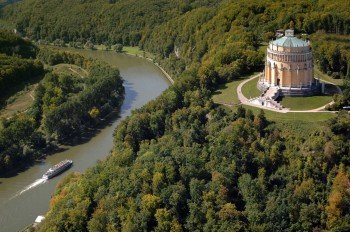
By car
Coming from the eastern or western direction, take motorway A3 and exit at Pentling. Here you change to motorway A93. This is also the starting point for those approaching the sight from the northern direction. Take Exit 45-Regensburg-Süd. Then follow the B16 until you get to the exit taking you towards Riedenburg/Kelheim. Turn right onto KEH38. In the roundabout, take the second exit (St2230) and then turn left into the Alleestraße. Follow the road straight forward, afterwards turn right into the Hienheimer Straße.
In order to get to the Hall of Liberation, drive up the Michelsberg until you spot a free car park. You may leave your car there and then walk the rest to the Hall of Liberation.

